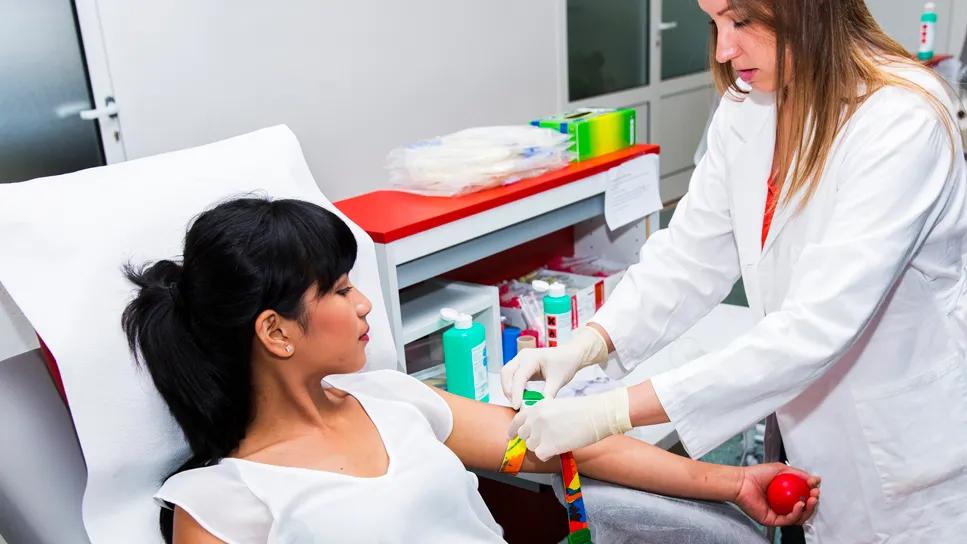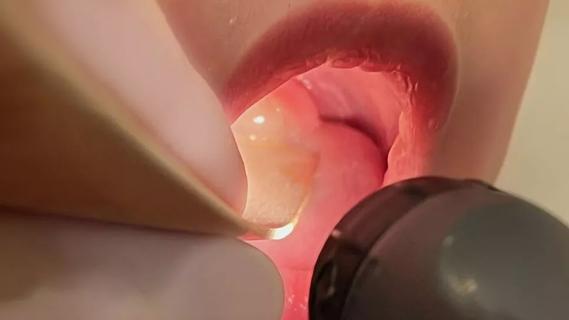Screening also found to be cost-effective

A modeled one-time screening for Epstein-Barr Virus (EBV)-associated nasopharyngeal carcinoma (NPC) among high- and intermediate-incidence populations in the United States may reduce NPC mortality and be considered cost-effective. Fewer than 2,000 individuals in high-incidence populations would need to be screened to detect one case of NPC. When detected early via EBV-based serologic screening, NPC is highly curable with less intensive therapy, but currently most cases are not detected until they reach an advanced stage.
Advertisement
Cleveland Clinic is a non-profit academic medical center. Advertising on our site helps support our mission. We do not endorse non-Cleveland Clinic products or services. Policy
The finding comes from interrogation of the SEER Asian and Pacific Islander dataset for 12 intermediate- and high-incidence populations for World Health Organization type II/III NPC. This data was presented by Jacob A. Miller, MD, Assistant Professor of Radiation Oncology at Cleveland Clinic Cancer Institute, at the 2024 American Society for Radiation Oncology (ASTRO) Annual Meeting.
“In Western countries, NPC is a very rare disease with disproportionate incidences identifiable based upon ethnicity or ancestry,” says Dr. Miller. “Approximately 45% of NPC cases in the U.S. occur in only 10% of the population, namely Asian Americans and Pacific Islanders. We observed that in the high-incidence populations, screening both men and women may be considered cost-effective using anti-BNLF2b serology and selective endoscopy. The rarity of this cancer nationally, in my opinion, need not deter us from offering screening to these high-risk individuals.”
NPC usually presents when at stage III or IV, and at this stage typically requires more intensive chemotherapy in addition to radiotherapy. Toxicity and cure rates are worse compared with cases detected at an early stage.
At the 2023 ASTRO Annual Meeting, Dr. Miller and colleagues revealed data to show that population-wide screening of middle-aged adults for NPC is cost-effective in southern China, where NPC is endemic.
In the current analysis, high-incidence populations were defined as those with an incidence of NPC >2 cases per 100,000 and intermediate-incidence was defined as 1 to 2 cases per 100,000.
Advertisement
Intermediate- and high-incidence populations in the U.S. accounted for only 11% of U.S. person-years but almost 43% of NPC cases, confirming the elevated risk of NPC in these populations.
The six serologic screening strategies evaluated consisted of combinations of EBV serology, nasopharyngeal swab EBV polymerase chain reaction, nasopharyngeal endoscopy and magnetic resonance imaging. Cost-effectiveness was evaluated with incremental cost-effectiveness ratios (ICER).
“The technologies evaluated in our study are very basic: antigen-based ELISA,” says Dr. Miller. “The instruments used to conduct these tests are available in essentially any clinical laboratory nationwide, and there exists an identifiable high-risk population in the U.S. to screen. However, EBV anti-BNLF2b serology is not available outside of southern China, and it’s a matter of obtaining and validating testing kits.”
Using a hypothetical cohort of 50-year-old men and women, the median number needed to screen (NNS) to detect one case of NPC among high-incidence populations was 1,992. A median of 7.1 NPC deaths were averted per 100,000 screened.
Screening with anti-BNLF2b met the willingness-to-pay threshold in all five high-incidence populations, with a median incremental cost-effectiveness ratio per gross domestic product of 0.82. Willingness-to-pay thresholds of 1.0-2.0 ICER per GDP are commonly used in the U.S. to define cost-effectiveness. The cost-effectiveness threshold was also met among intermediate-incidence Filipino, Guamanian and Native Hawaiian men. When limited to men, screening was more cost-effective, with a median NNS of only 1,407.
Advertisement
A one-time screening strategy employing EBV anti-BNLF2b serology followed by selective endoscopy was the preferred screening strategy among the six strategies examined, due to highest sensitivity and lowest cost. Sensitivity was approximately 20% lower with alternate screening strategies at a slightly higher cost.
One-time screening was likely to remain cost-effective under a variety of assumptions, such as age at first screening and different costing methods. "The hope is that the research will aid in the design of screening initiatives in the U.S.," says Dr. Miller
A manuscript of the research presented at ASTRO was accepted for publication in Cancer Epidemiology, Biomarkers & Prevention.
Advertisement
Advertisement

Evidence-based recommendations for balancing cancer control with quality of life

Research aims to better understand the tumor immune micorenvironment

Prompt surgery was necessary when symptoms drastically increased

Use of MRI adds to cost but remains cost-effective due to higher sensitivity

Bispecific antibody bridging therapy deepens durability of BCMA CAR T-cell therapy without overlapping toxicities in patients with relapsed/refractory multiple myeloma

Phase 2 study brings pivotal advances in treatment efficacy and safety for the most challenging-to-treat population

Patient with quadruple refractory multiple myeloma achieves complete response with cell therapy

Distinct baseline immune profiles can predict response and resistance to different types of CAR-T cells.